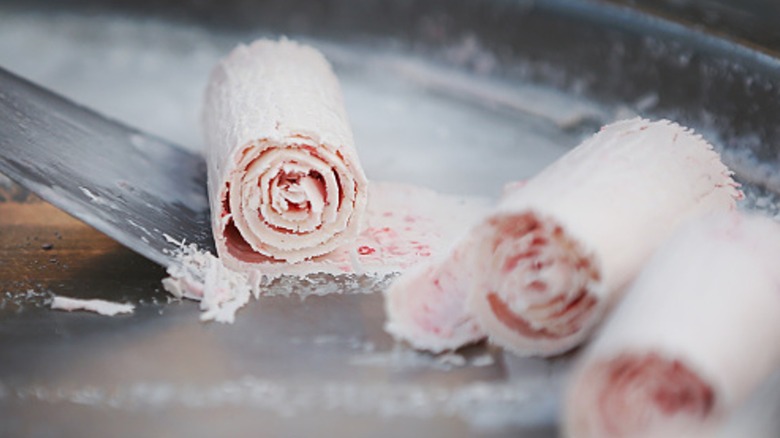Once upon a time, social media was captivated by Thai rolled ice cream. Unlike your typical scoop, this sweet treat began as a liquid base, spread on a frosty pan, chopped, mixed with fresh fruits or toppings, and rolled into delicate strips right before your eyes. It was a show served in a cup with colorful toppings that quickly became an Instagram sensation.
The rolled ice cream trend, while not new, has been a street favorite in Thailand since its debut in 2009 as “I-TIM-PAD” by Kajitsa Premwimol. Gaining popularity across Thailand and neighboring countries, the concept made its way to the U.S. in 2015, when Premwimol and two friends opened I-CE-NY in New York City. The trend exploded further thanks to social media and the spectacle of its preparation. By 2016, rolled ice cream was sprouting up in shops across America to captivate audiences with both its taste and its visual appeal.
Thai rolled ice cream isn’t your typical Thai dessert (no matter how cold it is); it strays away from traditional treats like Tau Suan (sweet mung bean pudding), sweet fruit sago, Khanom Tuay (coconut pudding), and the ever-popular mango sticky rice. Many of these classic desserts are starch-based and rarely frozen that rely on local ingredients, unlike the ice cream featured in this fun, modern, sweet creation. It’s the result of a delicious cultural mash-up that blends globalization and creative culinary experimentation.
How the frozen sweet Thai cuteness fuels global popularity
Using familiar and globally appreciated culinary ideas like ice cream but presenting them in a fresh, catchy, exciting way, Thai rolled ice cream is made for the social media age and almost everyone with its diverse flavor customization and colorful edible decorations. Its irresistible cuteness and the spectacular “stir-frying” process make it an instant hit, turning it into both a sight and a site, practically begging for a snapshot before the first bite.
In fact, this trend taps into the kawaii (“cute” in Japanese) aesthetic that has swept across East and Southeast Asia. Picture pastel-colored custard buns, animal-shaped cakes adorned with edible stars and hearts, or crackers and cookies that look like they’ve jumped out of a cartoon or manga. Kawaii culture–born in post-WWII Japan as part of the country’s rebranding, with iconic adorable figures like Hello Kitty and Doraemon–has profoundly shaped food culture across the region. Its cute, innocent, and whimsical appeal has influenced everything from snacks to desserts, creating a visually engaging and playful approach to food that transcends borders.
Thailand, heavily influenced by the spread of Japanese pop culture through dramas, music, films, and fashion, embraced these food trends, with Thai rolled ice cream being a prime example. The ice cream might even draw inspiration from Teppanyaki, a post-WWII Japanese cooking style that uses an iron griddle for stir-frying. The Thai version swaps the heat for a chill, but keeps the same sense of spectacle.
Roll your own: the easy, Insta-worthy ice cream you can make at home
It starts with a fresh cream base mixed with fruits, syrups, or nuts, all spread onto a metal pan chilled to 5 degrees Fahrenheit. The result? Instant freezing magic! While it may seem like a performance, you can easily recreate this dessert at home. Despite the impressive technique, rolled ice cream is fairly simple. Its real charm lies in its customizability since you can toss in anything from Oreos to berries and candies, and watch it get chopped, mixed, and rolled right in front of you.
The ice cream base itself is easier than traditional churned versions, requiring just two ingredients since it doesn’t aim for that smooth, creamy texture. For the rolling process, a proper rimmed sheet pan and a good metal spatula will do the trick. How easy is that? With just a few ingredients and the right pan, you can bring this social media-worthy treat to life in your own kitchen, perfect for parties or fun with the kids, and of course for your next Instagram story.

















